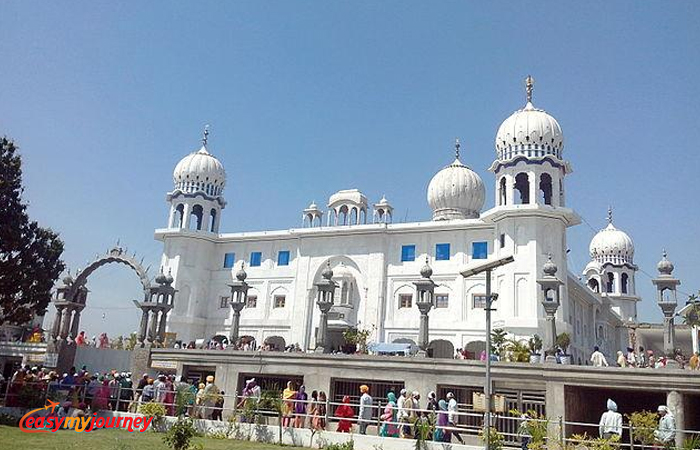Like so many other beautiful cities and towns in India, Ambala has a charm of its own. Its unique location, at the borders of the states of Punjab and Haryana, lends it a bustling atmosphere. The energetic vibe of this town is supplemented by a significant presence of the Indian Army and the Indian Air Force, in the district. The marvels of yesteryears can be seen in the beautiful colonial-era bungalows scattered across Ambala. Famous for being a hub for the production of scientific instruments and laboratory equipment, many people tend to overlook Ambala’s many temples and churches, with amazing architecture. Badshahi Bag Gurudwara, Jain Mandir, Holy Redeemer Church and Ambika Devi Mandir are a few of them. Behold the splendid visions of a night sky in Ambala Planetarium, one of the oldest of its kind in the country. Stroll along the banks of Rani Ka Talab, for a measure of solitude, away from the hectic pace of the city.
Best Time to Visit Ambala
The best time to visit Ambala is during the months of October and November. The monsoons come to an end in October, and various ponds and gardens located throughout the district are in full bloom, which makes visiting the city a must. During these months the weather is quite pleasant, in contrast to the scorching summers, harsh winters and heavy rains that the city experiences throughout the year. The average low temperature is between 11 °C and 17 °C, so make sure you carry a light jacket with you.
Weather Of Ambala
The weather of Ambala is similar to that of other cities and towns in Punjab and Haryana. It experiences extreme weather conditions. Summer season, which lasts from March to June, is quite scorching. It is recommended to avoid this season. The temperature generally reaches as high as 45 °C. Monsoon starts in July and ends in September. The heavy rains, that the city experiences in this season, also increase the humidity level. However, during the months of October and November, the monsoon subsides. The temperature cools down and the weather is comparatively pleasant. Winter season lasts from December to February. The weather is quite cold during this time, with temperatures ranging from 4 °C to 17 °C.
How to Reach Ambala?
By Air : The city of Ambala does not have its own airport. However, tourists can make use of Chandigarh International Airport, which lies just 42 kilometres away. This airport is connected to cities and towns all over the country, such as Bangalore, Mumbai, Delhi, Bhubaneswar, Ahmedabad, Chennai, Srinagar, etc. Some of the major airlines serving this airport are Air Asia India, Air India, GoAir, IndiGo, Jet Airways and SpiceJet. It is also connected to many other cities in the world such as New York, Paris, Beijing, Moscow, Melbourne, Toronto, Dubai, etc., via connecting flights from various international airports located in Bangalore, Mumbai, Delhi, etc.
By Rail : Ambala serves as a divisional headquarter of the Northern Railway Zone. Ambala Cantonment Railway Station is a major railway junction and it is one of the top 100 booking stations in India. After New Delhi, this station serves the most number of high-speed Shatabdi Express trains such as Kalka New Delhi Shatabdi Express, Chandigarh New Delhi Shatabdi Express, New Delhi Amritsar Swarna Shatabdi Express etc. This station has frequent trains to and from various stations across the country. Two other railway stations in Ambala are Ambala City Railway Station and Dhulkot Railway Station.
By Road : There are two main bus terminals in Ambala, one in located in Ambala Cantt and the other is located in Ambala City. As the district is conveniently located near five national highways, NH-1, NH-22, NH-72, NH-65 and NH-73, one can easily find plenty of buses. There are frequent buses to and from popular tourist destinations such as Delhi, Chandigarh, Amritsar and Shimla. Haryana Roadways is a major public sector transport corporation and serves millions of commuters daily, throughout the state. Many private bus operators also ply in the city, providing both A/C and non-A/C buses.

